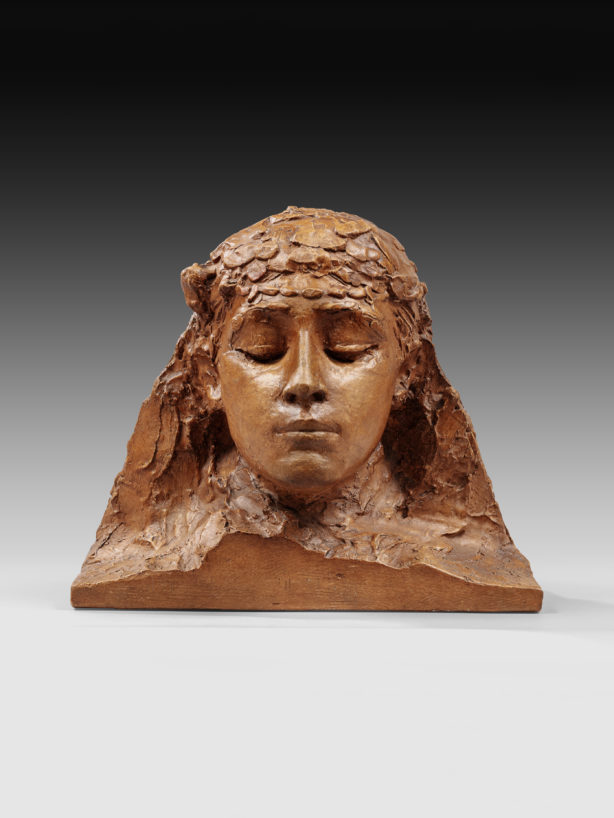Head of an Arab woman by René de St-Marceaux (1845-1915)
An exact contemporary of Auguste Rodin (1840-1917), René de Saint-Marceaux (1845-1915) lived through a period of artistic expansion and total renewal, in painting with the Impressionist movement and in sculpture with the rupture embodied by Rodin. The two men collaborated and then drifted apart in their respective pursuits. Both benefited from the favorable context of statuary. A talented sculptor, René de Saint-Marceaux was representative of the salon artists of the Third Republic, who competed and sought honors.
The State’s acquisition of La Jeunesse de Dante at the 1868 Salon brought him fame and commissions, while in 1880, L’Arlequin established his reputation once and for all. He resolutely turned to the creation of monuments for public spaces, satisfying numerous private collectors.
His career is full of surprises, unexpected twists and paradoxes. Rewarded for his rather classical production, he is nonetheless not a conformist and is constantly on the lookout for new ideas, technical developments or new inspirations. Sensitive to the Italian Renaissance, like the Neo-Florentines, he travelled extensively in Italy and was confronted with other cultures, in particular the Orient, which he discovered on his travels in Spain and North Africa between 1874 and 1879; our sculpture is the result.
This Arab woman’s head is inspired by the type of the Arab Dancer, his great masterpiece, presented at the 1886 Salon, of which the Musée des Beaux-Arts in Reims preserves a majestic stone version. From 1888 onwards, the artist synthesized the expression in heads and masks to emphasize the strong interiority: closed eyes, a finely modeled mouth and an elegantly drawn oval of the face convey the beauty, gentleness and serenity inspired by the Orient. This expression and quest for the spiritual, typical of the fin de siècle, evokes the 1890 painting Les Yeux clos by the Symbolist painter Odile Redon.
Our subject was explored on several occasions by Saint-Marceaux, using a variety of techniques: plaster, stone or terracotta.




